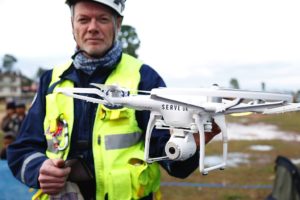“Comments on the acceptance of the operation of drones were split between negative feedback, mainly due to privacy and noise concerns, and the understanding of the potential improvements it could offer to emergency responders, to a lesser extent.”
What people think about drones for public safety and first response applications is important: most communities are more willing to accept drones if they see them as beneficial or lifesaving. That public acceptance often translates to fewer local regulations designed to limit drone use.
Getting the public to understand the lifesaving potential of drone technology was the point of the ResponDrone project. “The main aim of the focus groups was to develop recommendations on how to communicate and position the societal benefits of using drones for emergency response in order to increase public acceptance of drone technology,” says the release.
“The answers indicate that drones still appear to be new and somewhat unknown to the vast majority,” said ResponDrone project coordinator Max Friedrich from the German Aerospace Center (DLR).
“In light of the findings, ResponDrone recommends that emergency drones carry special identification, such as a specific colour or a logo, make distinctive sounds or have unique lights. Further, it is recommended that the residents are informed about flights and drills beforehand.”
While the public can’t be invited to watch drones in action during a wildfire or an accident response, public safety organizations around the world can ensure that community communication is a key part of their drone program.

